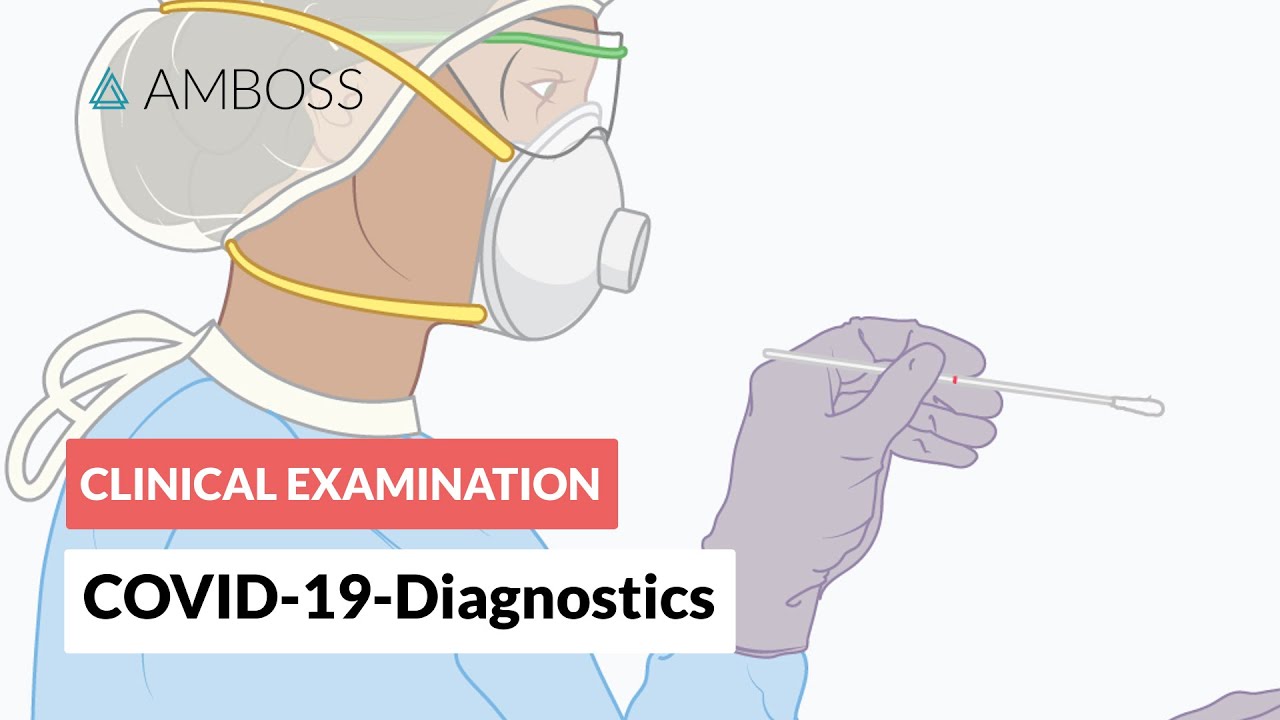Covid 19 Diagnostics performing a nasopharyngeal or oral pharyngeal swab. It is essential to follow proper infection control measures when samples are collected from patients with a suspected corona virus infection. Among other things, the examiner should wear an n95 respirator mask gown, protective goggles and gloves to save resources. We will refrain from using each of these items in this video and instead only show the technical details of sample collection. Let’S begin with the nasopharyngeal swab, the patient should be alert and cooperative, allow them to first blow their nose. The patient should sit in a relaxed and comfortable position during the sample collection process tilt the patient’s head back slightly and support it with your non-dominant hand, if necessary, lean the patient’s head against a wall to minimize jerky movements stand slightly offset from the patient to avoid The risk of contamination in case of a sudden, cough or sneeze be sure to advise the patient of potential discomfort during sample collection, and let the patient know that they are welcome to close their eyes. Sample collections should only be completed using sterile swabs made from artificial cotton with flexible plastic, shafts, calcium, alginate, swabs or swabs with wooden shafts must not be used. These materials can inactivate viral particles or inhibit PCR tests. Furthermore, wooden shafts are more likely to cause patient injury. Hold the swab, like a pen between the thumb index and middle fingers, maintain a loose grip that allows the swab to accommodate any resistance encountered during sample collection to reduce the risk of injury, avoid using the following hand, position during sample collection start by inserting the swab Horizontally into the left or right, nostril carefully advance the swab, while maintaining a course that is close to both the septum and the floor of the nose. Parallel to the palate do not advance the swab upwards, but instead straight back until resistance is felt as the swab reaches the posterior nasopharynx when collecting samples from an adult patient. This corresponds to a travel distance of approximately five to six centimeters or two inches leave the swab at this depth for a few seconds, while gently wiping the wall by twisting the swab shaft slowly and gently, remove the swab immediately insert the swab into the sample collection. Tube which may contain two to three milliliters of viral transport media if a nasopharyngeal swab cannot be collected. For any reason, an oropharyngeal sample can be also collected through the mouth again inform the patient that the smear will feel uncomfortable for a short time and may trigger a gag reflex. Ask the patient to open their mouth wide, protrude their tongue forward and say ah depress the patient’s tongue using a tongue. Depressor gently insert the swab into the oral cavity without touching the lips teeth tongue, hard palate or soft palate. These surfaces should be avoided, as they are often colonized by a wide range of microbes collect the sample from the back wall of the throat twist, the swab shaft gently, but thoroughly sampling the oral pharyngeal wall, just as with the nasopharyngeal swab, the oral pharyngeal swab should Now be placed into the sample collection tube and sent to the laboratory as quickly as possible.

